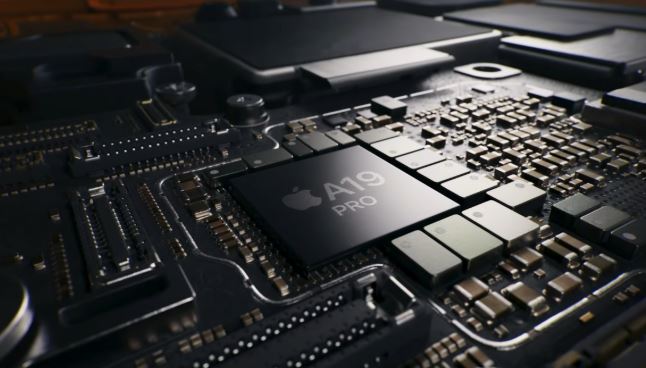
Apple has always been at the forefront of smartphone innovation, and with every generation of its devices, it pushes the boundaries of what is possible. The upcoming N1 chip in iPhone 17 and iPhone Air is no exception. This new chip represents one of the most significant leaps in mobile processing technology that Apple has made in years. It is not just an upgrade in speed; it is a complete rethinking of efficiency, artificial intelligence integration, and how mobile devices interact with the broader Apple ecosystem.What is the New N1 Chip in iPhone 17 and iPhone Air
Why the N-Series?
For more than a decade, Apple’s flagship iPhones have relied on the A-series chips, from the groundbreaking A4 in the original iPad to the incredibly powerful A17 Pro used in the iPhone 15 Pro lineup. Each of these chips was designed to balance performance, energy efficiency, and compatibility with Apple’s tightly integrated software.
So why the shift to the N-series, starting with the N1 chip? The “N” in the N1 points to neural computing, highlighting Apple’s decision to move toward a future where artificial intelligence (AI) and machine learning are at the core of the smartphone experience. Rather than being just another processor, the N1 is built from the ground up to handle advanced AI tasks, augmented reality (AR) rendering, and high-efficiency performance for apps that are becoming increasingly demanding.
Key Features of the N1 Chip
AI-Powered Processing
At the heart of the N1 chip is a dramatically upgraded Neural Engine. Unlike previous chips where the Neural Engine was just one part of the system-on-a-chip (SoC), the N1 makes neural computing central to its entire architecture. This means real-time translation, generative AI image editing, and voice recognition tasks are faster and smoother than ever.
Imagine asking Siri to create a custom photo background in seconds or having your iPhone instantly transcribe and summarize a lecture in real-time. These scenarios are now practical thanks to the N1 chip.
Unmatched Energy Efficiency
Battery life is one of the most important features for modern smartphones, and Apple knows this. The N1 chip leverages a new 2-nanometer process node, allowing it to deliver up to 35% more efficiency compared to the A17 Pro. This efficiency translates into longer battery life for both the iPhone 17 and the iPhone Air, even under heavy workloads like gaming or video editing.
For the iPhone Air, which is designed to be lighter and thinner, this efficiency is even more critical. Users can expect an all-day battery without sacrificing performance.
Next-Level Graphics and AR Performance
Apple has been investing heavily in augmented reality, and the N1 chip is the company’s boldest step yet in this space. The integrated GPU in the N1 delivers console-level graphics performance, optimized for both high-end games and AR applications.
For example, AR apps can now map rooms with centimeter-level accuracy in real-time. Gamers, on the other hand, can experience smoother frame rates, ray tracing, and highly detailed textures without draining the battery.
Seamless Integration with Apple’s Ecosystem
One of Apple’s strengths has always been its ecosystem, and the N1 chip makes this integration even deeper. The chip is designed to work seamlessly with macOS and iPadOS, enabling faster device handoffs, improved AirDrop speeds, and even cross-device AI tasks. Imagine starting an AI-driven photo edit on your iPhone 17 and instantly finishing it on your MacBook without missing a beat.
Why Apple Chose the N1 Chip for iPhone 17 and iPhone Air
Apple’s choice to introduce the N1 chip in iPhone 17 and iPhone Air reflects the company’s long-term strategy. Smartphones are no longer just communication tools; they are powerful hubs of productivity, creativity, and entertainment. The demand for AI-powered features is growing rapidly, and Apple wants to ensure that its devices remain ahead of the curve.
By positioning the N1 chip as the centerpiece of the iPhone 17 and iPhone Air, Apple signals that the future of mobile devices will be AI-first. This move also puts Apple in direct competition with other tech giants like Qualcomm and Google, who are similarly building chips optimized for AI and machine learning.
Real-World Benefits for Users
It’s easy to get lost in the technical jargon, but what does the N1 chip actually mean for everyday users? Here are some practical benefits:
- Faster multitasking: Apps launch instantly, and switching between them feels effortless.
- Smarter photography: The N1 enables advanced AI photo editing, scene recognition, and automatic adjustments for lighting and exposure.
- Enhanced security: With on-device AI processing, tasks like Face ID and privacy filters are faster and more secure.
- Better gaming: The chip supports advanced graphics rendering, giving gamers a smoother, console-like experience.
- Extended battery life: Users can go longer between charges, even with heavy use.
The Future of the N-Series
The N1 chip is just the beginning. Just as the A-series chips evolved year after year, we can expect the N-series to become the backbone of Apple’s devices for the next decade. The N2 and beyond will likely bring even more sophisticated AI capabilities, making iPhones less like phones and more like intelligent companions.
Moreover, the introduction of the N1 chip raises questions about whether Apple will eventually move this architecture into its Macs and iPads, unifying all its devices under a single AI-first chip design.
Should You Upgrade?
For those considering whether to upgrade to the iPhone 17 or iPhone Air, the N1 chip is perhaps the biggest reason to make the leap. If you rely on your phone for photography, productivity, gaming, or simply want the best possible performance, the benefits are undeniable.
However, if your current device already meets your needs and you’re not interested in AI-driven features, you may not feel the full impact of the N1 just yet. Still, as apps and services begin to take advantage of the chip’s unique capabilities, upgrading sooner rather than later might be a smart move.
Final Thoughts
The N1 chip in iPhone 17 and iPhone Air represents more than just another performance boost—it marks a turning point in how Apple envisions the future of its devices. By prioritizing AI, efficiency, and ecosystem integration, Apple has created a chip that not only improves today’s smartphone experience but also prepares for the next wave of technological innovation.
For users, the N1 chip means faster, smarter, and more efficient devices that can handle the growing demands of modern digital life. Whether you’re a gamer, a creative professional, or someone who just wants a reliable phone, the iPhone 17 and iPhone Air powered by the N1 chip are poised to deliver an experience unlike any before.
Need help publishing this on WordPress? Copy this HTML into a new post (Text/HTML mode) and add a featured image. For AMP or schema markup, ask and I’ll add it.
